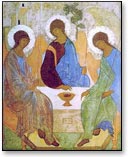We have record of its use as early as 2,000 years before Christ. The Bible is interspersed with references to butter, the product of milk from the cow. Not only has it been regarded from time immemorial as a food fit for the gods, but its use appears to have been divinely recommended and its users promised certain immunities against evil. Butter was the only food ever defined by an Act of the U.S. Congress prior to the enactment of the Food, Drug and Cosmetic Act of 1938.
The word butter comes from bou-tyron, which seems to mean "cowcheese" in Greek. Some scholars think, however, that the word was borrowed from the language of the northern and butterophagous Scythians, who herded cattle; Greeks lived mostly from sheep and goats whose milk, which they consumed mainly as cheese, was relatively low in butter (or butyric) fat.
Naturally, it is presumed that in four thousand years there has been considerable improvement in the manufacture of butter although we, of course, know little more of the method by which Sarah produced butter for the angels than we know of the means employed in the construction of the pyramids. The earliest details of method of manufacture are derived from the Arabs and Syrians, who appear to be as well satisfied with the original process of making butter as they are with other habits, since they have remained unchanged for centuries. The original practice of the Arabs and Syrians, so far as is known, was to use vessel made from goatskin for a churn. The animal was skinned, the skin sewed up tight, leaving an opening only at the left foreleg, where the cream was poured in. The "churn" was then suspended from the tent poles and swung until the "butter comes." This, incidentally, is the earliest known process of making butter.

